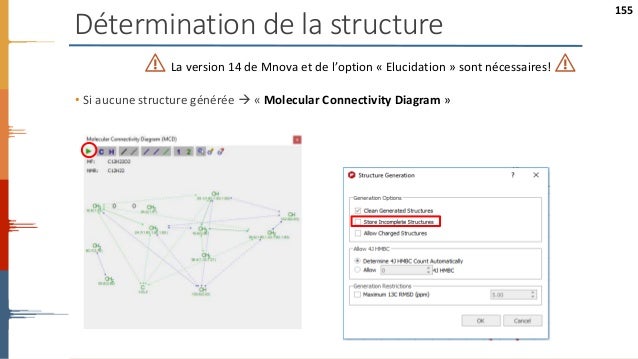
In all instruments, samples may be investigated in range of 2.5 - 400 K, the centre benefits from diverse lasers and microwave, optical and current detection are available. A 2020 grant from EPSRC updated the original X-/W-band spectrometer and added AWG capability at W-band.
#Dessiner molecule mestrenova generator#
In 2013, CAESR was awarded a £1.3M grant from EPSRC to add a state-of-the-art, X-/Q-band ESR spectrometer (9.5 & 34 GHz) with an arbitrary waveform generator (AWG) that allows for application of the advanced techniques in pulsed ESR research. The Centre for Advanced Electron Spin Resonance (CAESR) located on the first floor of the Inorganic Chemistry Laboratory presently houses commercial spectrometers for continuous-wave (CW) ESR and pulsed ESR operating at X-/ W-band (9.5 & 94 GHz). An external mass spectrometry service and research collaboration framework caters for links with external academic institutions and interactions with industry. A number of mass spectrometry services include: accurate mass, high resolution and biological molecule analysis (oligonucleotides and proteins) provided for departmental researchers. Equipment access is configured to provide open access, trained user and HRMS systems available for researchers across the department. Instrumentation includes GC-MS, LC-MS, nanoLC/MS, MALDI TOF and ion-mobility-MS systems.
#Dessiner molecule mestrenova full#
It is run and managed by four full time staff and attracts research students and visiting academics. It has 21 mass spectrometer systems with an equipment base of £7.5 million providing a wide range of analytical capabilities. The Mass Spectrometry Research Facility is housed in the Chemistry Research Laboratory and is one of the largest and best equipped mass spectrometry labs in the UK. The facility also provides commercial services to industry where possible. The facility is maintained and operated by five staff members and access is provided through fully automated open-access instruments, bookable “hands-on” systems or through a submission service provided by NMR staff, who also contribute directly to research projects within the Chemistry Department and beyond. The solution phase instruments are equipped with an extensive range of capabilities including nitrogen- and helium-cooled cryogenic probes (at 600 and 700 MHz), multinuclear probes, high- and low-temperature operation and automation and the multinuclear solid-state systems also have variable temperature capabilities. It operates thirteen solution-state FT NMR instruments with proton operating frequencies ranging between 200 and 700 MHz, which are capable of running most experiments of interest to the research chemist, and two 400 MHz solid-state instruments. The Department’s core NMR facility is housed in the Chemistry Research Laboratory and is one of the largest magnetic resonance facilities in the UK supporting chemical science research. Click on the links to find out about each of their services. The Chemistry Research Facilities are divided into the following areas.




 0 kommentar(er)
0 kommentar(er)
